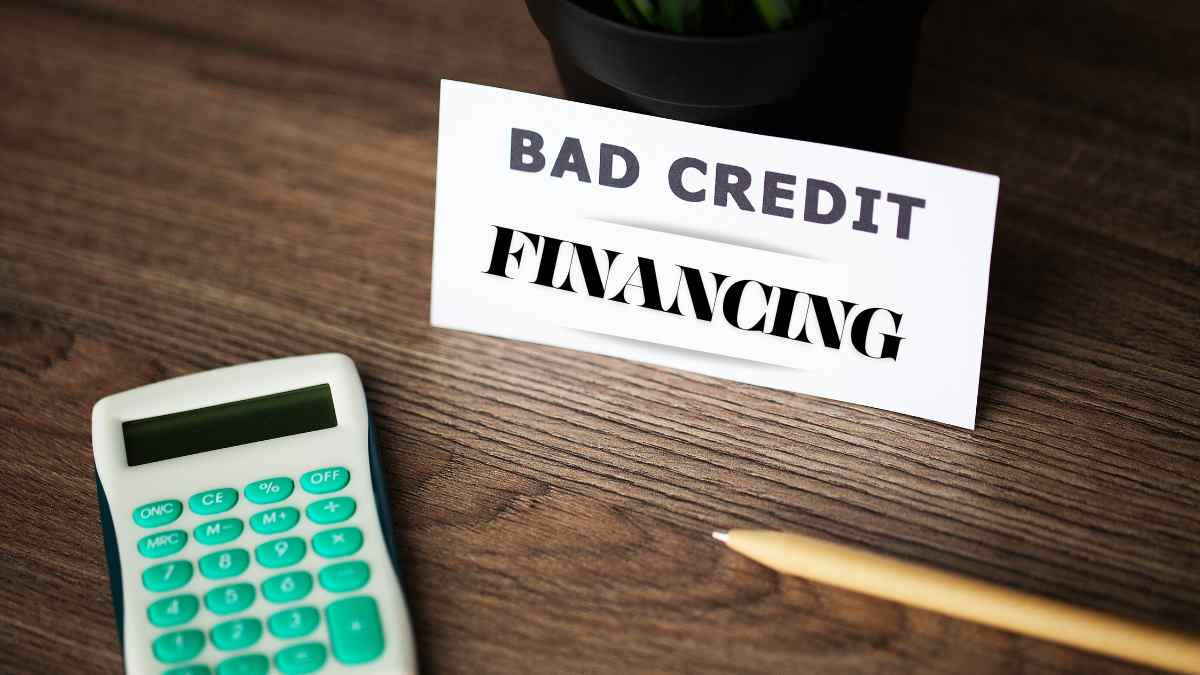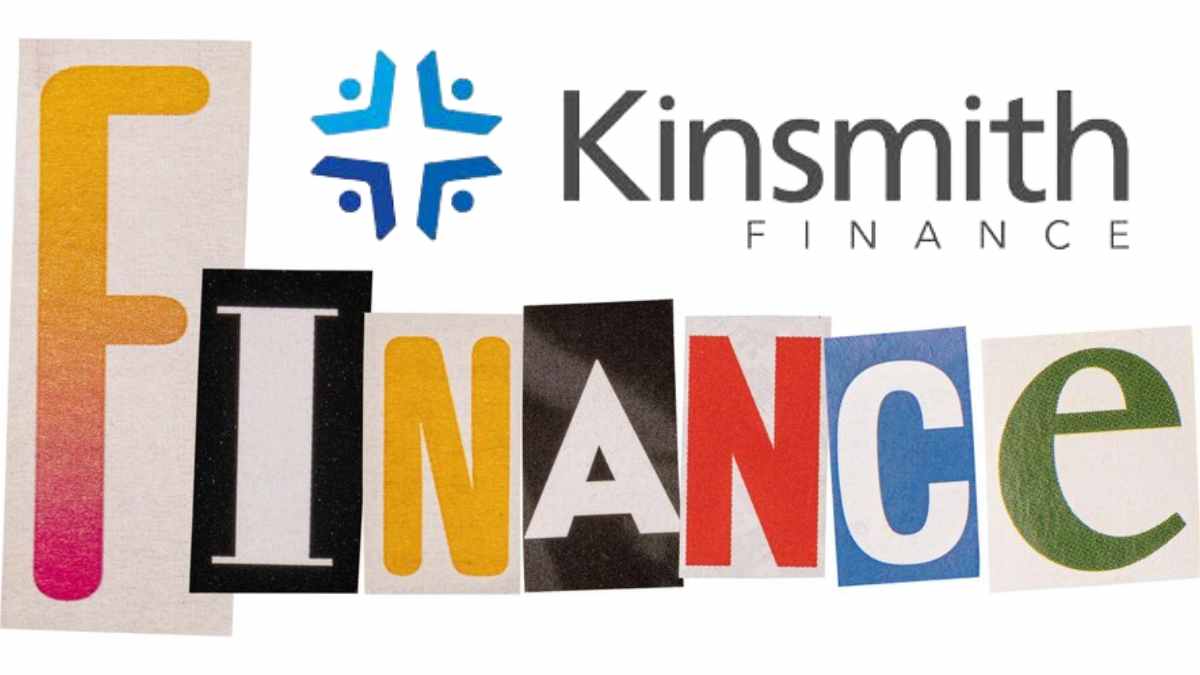Finance
Fidelity Dividend Reinvestment: A Path to Long-Term Wealth

Are you looking for a way to grow your wealth over the long-term? If so, Fidelity Dividend Reinvestment (DRIP) might just be the answer you’ve been searching for. In this blog post, we’ll take a deep dive into the world of dividend reinvestment and explore how Fidelity DRIP can pave the path to long-term financial success. Whether you’re a seasoned investor or just starting out, understanding the basics of dividends and reinvesting is crucial in maximizing your returns. So let’s jump right in and uncover the benefits, setup process, stock selection strategies, and potential risks associated with Fidelity DRIP. Buckle up as we embark on this exciting journey towards building lasting wealth!
Understanding the Basics of Dividends and Reinvesting
Dividends are a key component of investing, and understanding how they work is essential for any investor looking to build long-term wealth. So, let’s dive into the basics of dividends and reinvesting!
What exactly are dividends?
Essentially, when you own shares in a company that pays dividends, you become entitled to a portion of the company’s profits. These payments can be made on a regular basis (quarterly or annually) and are usually paid out in cash.
Now that we know what dividends are, let’s discuss reinvesting. Dividend reinvestment involves taking those cash dividend payments and using them to purchase additional shares of the same stock. Instead of receiving the cash directly as income, it is automatically put back into your investment portfolio.
One major benefit of dividend reinvestment is compounding. By consistently reinvesting your dividends over time, you can potentially grow your investment exponentially as both your initial capital and subsequent dividend payments generate even more returns.
Additionally, dividend reinvestment allows investors to take advantage of dollar-cost averaging. This strategy involves buying more shares when prices are low and fewer shares when prices are high. Over time, this can help smooth out market fluctuations and potentially improve overall returns.
To get started with dividend reinvestment at Fidelity, you’ll need to open an account specifically designed for this purpose: a DRIP account. Once set up, you’ll have access to various stocks that offer dividend reinvestment options.
When choosing stocks for your DRIP portfolio at Fidelity or any other platform for that matter), it’s important to consider factors such as historical performance, financial stability of the companies issuing dividends,and their track record in consistently paying dividends.
To maximize returns with Fidelity DRIP or any other similar program available elsewhere,you may also want to diversify your holdings across different sectors or industries.
It helps mitigate risk by spreading investments across multiple areas rather than putting all eggs in one basket. Keep in mind that while Fidelity DRIP and dividend reinvestment.
What is Fidelity Dividend Reinvestment?
Fidelity Dividend Reinvestment is a powerful investment strategy offered by Fidelity Investments that allows investors to automatically reinvest the dividends earned from their investments back into purchasing more shares of the same stock or fund. Instead of receiving cash payments, these dividends are used to buy additional shares, which in turn increases your ownership stake in the company.
This strategy is especially appealing for long-term investors who are looking to build wealth over time. By reinvesting dividends, you can take advantage of compound growth and potentially see exponential returns on your investments. It’s like a snowball effect – as your number of shares grows, so does the potential for future dividend payouts.
One key advantage of Fidelity Dividend Reinvestment is its convenience. Once you set up this feature within your Fidelity account, it operates on autopilot. You don’t have to worry about manually reinvesting each dividend payment or timing the market – everything happens automatically and seamlessly.
Furthermore, Fidelity offers a wide range of investment options suitable for dividend reinvestment. Whether you prefer individual stocks or mutual funds, there are plenty of choices available to tailor your portfolio according to your financial goals and risk tolerance.
Fidelity Dividend Reinvestment can be an excellent tool for long-term wealth accumulation through compounding returns. As we explore further in this article, understanding how it works and implementing it effectively can help pave the way towards achieving financial success in the future!
How Does It Work?
Fidelity Dividend Reinvestment is a powerful tool that allows investors to maximize their returns over the long term. But how exactly does it work? Let’s dive in and explore the mechanics behind this strategy.
When you opt for dividend reinvestment with Fidelity, instead of receiving your dividends as cash payouts, they are automatically used to purchase additional shares of the same stock or fund. This process is known as “reinvesting” your dividends. Essentially, you’re putting your money back to work for you, compounding your investment over time.
To get started with Fidelity Dividend Reinvestment, all you need to do is enroll in one of their eligible accounts and select the option for automatic dividend reinvestment. From then on, any dividends earned from stocks or funds held within that account will be automatically reinvested.
The benefits of this strategy are twofold: first, by reinvesting dividends instead of taking them as cash, you can potentially accelerate the growth of your investment portfolio. Second, by regularly purchasing additional shares at different price points over time (thanks to dollar-cost averaging), you can smooth out market volatility and reduce the impact of short-term price fluctuations on your overall return.
Furthermore, Fidelity offers a wide range of investment options across various asset classes and sectors. Whether you prefer high-dividend-paying stocks or diversified index funds with consistent annual income distributions—there’s something for everyone.
It’s important to note that while dividend reinvestment can be an effective wealth-building tool, it also comes with some risks. For example, if a company reduces or eliminates its dividend payments altogether due to financial difficulties or other factors beyond its control; this could negatively impact both current income streams and future capital appreciation potential.
To maximize your dividend reinvestment strategy with Fidelity:
- Research and choose investments carefully – look for companies/funds with strong track records in paying steady dividends.
- Keep an eye on your portfolio – regularly review and adjust your holdings to ensure
Benefits of Fidelity DRIP for Long-Term Investing
Benefits of Fidelity DRIP for Long-Term Investing:
- Compounding Growth: One major advantage of utilizing Fidelity Dividend Reinvestment (DRIP) is the power of compounding. By automatically reinvesting your dividend payments into additional shares, you can accelerate the growth potential of your investments over time. This compounding effect can significantly boost your overall returns in the long run.
- Cost Efficiency: Fidelity DRIP allows you to invest with minimal fees and expenses compared to traditional methods. Since you are reinvesting dividends directly back into your portfolio, you avoid transaction costs that may arise from purchasing additional shares separately. This cost efficiency enables you to maximize the value of your investments without unnecessary expenses eating away at your returns.
- Dollar-Cost Averaging: Another benefit of using Fidelity DRIP for long-term investing is its ability to implement dollar-cost averaging strategy effortlessly. With automatic reinvestment, you consistently buy more shares regardless of market conditions or share prices. This approach helps smooth out market fluctuations and reduces the risk associated with trying to time the market.
- Increased Portfolio Diversification: Through dividend reinvestment, Fidelity DRIP provides an opportunity for investors to diversify their portfolios further without any extra effort or cost on their part. As dividend payments are automatically reinvested across a range of different stocks within your chosen plan, it helps spread risk and potentially enhances overall portfolio stability.
- Long-Term Wealth Accumulation: One key benefit offered by Fidelity DRIP is its potential to generate significant wealth over time through consistent investment and compounding growth strategy mentioned earlier.
You can take advantage of regular income generated by dividends while simultaneously building a larger shareholding position in quality companies.
But remember; investing always involves some degree challenges. The next sections will explore how t oset up a Fidelty DRP account and choose th e right stocks for your portfolio
How to Set Up a Fidelity DRIP Account
Setting up a Fidelity Dividend Reinvestment (DRIP) account is a straightforward process that can help you on your path to long-term wealth. Here’s how you can get started:
- Research and choose the right Fidelity DRIP-eligible stocks: Before setting up your account, it’s important to research and select the stocks that offer dividend reinvestment options through Fidelity. Look for stable companies with a history of consistent dividends.
- Open a brokerage account with Fidelity: If you don’t already have an account with Fidelity, you’ll need to open one first. The process is simple and can be done online or by contacting their customer service.
- Enable DRIP for your chosen stocks: Once your brokerage account is set up, navigate to the settings or preferences section and enable dividend reinvestment for each stock in which you want to participate in the program.
- Set up automatic investments: To make things even more convenient, consider setting up automatic investments into your DRIP stocks. This way, any dividends received will automatically be reinvested without requiring manual intervention.
- Monitor and review regularly: After setting everything up, it’s essential to monitor your DRIP portfolio regularly and review its performance periodically. Keep an eye on any changes in company fundamentals or market conditions that may impact the dividend payouts.
By following these steps, you can easily set up a Fidelity DRIP account and start benefiting from long-term wealth accumulation through dividend reinvestment!
Choosing the Right Stocks for Your DRIP Portfolio
Choosing the right stocks for your DRIP portfolio is a crucial step towards building long-term wealth. With Fidelity Dividend Reinvestment (DRIP), you have the opportunity to reinvest your dividends and potentially compound your returns over time. But how do you go about selecting the best stocks for this strategy?
First, it’s important to assess your investment goals and risk tolerance. Are you looking for stable dividend-paying companies or higher-growth opportunities? Consider factors such as industry trends, company fundamentals, and historical dividend growth.
Next, research is key. Look into the financial health of potential companies by analyzing their balance sheets, income statements, and cash flow statements. Pay attention to metrics like earnings per share (EPS), payout ratio, and dividend yield.
Diversification is another critical aspect when choosing stocks for your DRIP portfolio. Spreading your investments across different sectors can help mitigate risks associated with any particular industry or company.
Furthermore, consider companies with a track record of consistent dividend payments and increases over time. This demonstrates their commitment to returning value to shareholders.
Stay informed about market conditions and be prepared to adjust your portfolio accordingly. Regularly review performance metrics and make necessary changes if certain stocks no longer align with your investment objectives.
Remember that selecting stocks involves careful analysis and ongoing monitoring – there are no guarantees in investing! It’s essential to consult with a financial advisor who can provide personalized guidance based on your individual circumstances.
By following these tips when choosing the right stocks for your DRIP portfolio through Fidelity Dividend Reinvestment (DRIP), you’ll be well on your way towards maximizing potential returns in the long run!
Tips for Maximizing Your Returns with Fidelity DRIP
When it comes to maximizing your returns with Fidelity Dividend Reinvestment (DRIP), there are a few tips and strategies that can help you make the most of this investment approach.
Diversification is key. Instead of putting all your eggs in one basket, consider investing in a variety of dividend-paying stocks across different sectors. This will help spread the risk and potentially increase your overall returns.
Keep an eye on dividend growth. Look for companies that have a track record of consistently increasing their dividends over time. These companies tend to be more stable and have strong financials, making them ideal candidates for a DRIP portfolio.
Another tip is to reinvest your dividends strategically. Rather than automatically reinvesting all dividends back into the same stock, consider allocating them to other stocks within your portfolio. This allows you to take advantage of potential opportunities and further diversify your holdings.
Additionally, regularly review and rebalance your DRIP portfolio. As market conditions change, some stocks may outperform while others may underperform. By periodically reassessing and adjusting your holdings, you can ensure that your portfolio remains aligned with your investment goals.
Don’t forget about fees! While Fidelity offers low-cost DRIP accounts, it’s still important to be mindful of any associated charges or fees when setting up and managing your account.
By following these tips and staying informed about market trends and company performance, you can maximize the potential returns from Fidelity Dividend Reinvestment (DRIP) and work towards building long-term wealth through dividend investing!
Potential Risks and Drawbacks of Fidelity DRIP
While Fidelity Dividend Reinvestment (DRIP) can be an excellent strategy for long-term wealth building, it is essential to consider the potential risks and drawbacks before diving in.
One risk to be aware of is the volatility of stock prices. When you reinvest dividends into more shares, you become more exposed to market fluctuations. This means that if the stock price falls, your overall investment value could decrease.
Another drawback is the lack of diversification in a DRIP portfolio. Since most DRIPs focus on a single company’s stock, your investments may not be spread across different industries or sectors. This concentration can increase the level of risk as any negative news or events impacting that specific company could significantly affect your returns.
Additionally, there may be fees associated with setting up and maintaining a DRIP account with Fidelity. It’s crucial to understand these costs upfront so that they don’t eat into your overall returns over time.
Dividend income from a DRIP portfolio might not always keep pace with inflation. While reinvesting dividends can help compound growth over time, it’s important to evaluate whether this strategy aligns with your financial goals and needs.
While Fidelity DRIP offers many advantages for long-term investing, it’s vital to consider these potential risks and drawbacks before committing fully. By understanding both the benefits and limitations of this approach, you can make informed decisions about how best to grow your wealth effectively!
Conclusion
Fidelity Dividend Reinvestment (DRIP) offers a compelling opportunity for long-term investors to build wealth through the power of dividends. By reinvesting your dividend payments, you can harness the potential of compounding and steadily grow your investment portfolio over time.
Setting up a Fidelity DRIP account is relatively straightforward, and with access to a wide range of stocks, you can handpick the companies that align with your investment goals and values. However, it’s essential to carefully evaluate each stock before adding it to your DRIP portfolio.
While Fidelity DRIP has numerous benefits, such as automatic reinvestment and potentially higher returns in the long run, there are also risks involved. Stock market fluctuations, changes in company fundamentals, or unforeseen economic events may impact the performance of your investments.
Before diving into Fidelity DRIP or any investment strategy for that matter, it’s crucial to consider factors like risk tolerance, financial goals, and time horizon. It might be wise to consult with a financial advisor who can provide personalized guidance based on your unique circumstances.
Fidelity Dividend Reinvestment can serve as an effective tool for building long-term wealth if utilized wisely. Through careful selection of stocks and consistent reinvestment of dividends, you have the potential to generate significant returns over time. However, always remember that investing involves risks; therefore proper research and patience are key.
So why not explore this powerful investment strategy? With Fidelity DRIP at your disposal plus sound knowledge about dividends and reinvesting them intelligently- there’s no telling how far you could go on the path towards achieving financial success!
FAQS
What is dividend reinvestment?
When you invest in stocks or mutual funds and earn dividends, you may choose to reinvest those funds or utilize the money to buy additional shares of the same investment.
How do I reinvest dividends with Fidelity?
Fidelity offers an automated dividend reinvestment plan (DRIP) for assets that qualify, allowing you to reinvest dividends. In most cases, you may access this feature in the settings section of your Fidelity account.
Are all investments eligible for dividend reinvestment at Fidelity?
You may not be able to reinvest your dividends in every investment. While most stocks and even some mutual funds should be eligible, you should verify this with Fidelity or review the terms of your individual investment to be sure.
Is there a fee for dividend reinvestment at Fidelity?
In most cases, reinvesting dividends does not incur any further costs from Fidelity. To be sure there aren’t any hidden fees, check the terms of service or the cost schedule.
Can I choose which investments to reinvest dividends into?
One common use case for Fidelity’s DRIP is the reinvestment of dividends back into the original investment. Within certain constraints, you may be able to personalize your reinvestment choices.
How can I enroll in Fidelity’s dividend reinvestment plan?
You may set up dividend reinvestment by logging into your Fidelity account, going to the account settings or investment information, and searching for the option. Sign up for the DRIP by following Fidelity’s instructions.
Finance
https://thetechijournal.com/onyx-shower/

In House Financing Cars! Are you dreaming of cruising around town in your dream car, but struggling to secure financing? In-house financing could be the solution you’ve been searching for! From understanding how it works to navigating the negotiation process, this blog will guide you through everything you need to know before buying a car with in-house financing. Buckle up and let’s dive into the world of in-house car financing together!
In House Financing Cars: Explanation of In House Financing
In house financing cars is a financing option offered directly by car dealerships, allowing customers to secure a loan without going through a third-party lender. This type of financing can be appealing to those with less-than-perfect credit or limited financial history.
So, what does in-house financing cars mean at car dealerships? Essentially, it means that the dealership acts as the lender, providing you with the funds needed to purchase your vehicle directly.
How does in-house car financing work? Well, instead of applying for a loan from a bank or credit union, you’ll submit your application and financial information directly to the dealership. The dealership will then review your application and determine the terms of your loan based on their own criteria.
Not all car lots offer in-house financing, so it’s essential to do some research and find dealerships that provide this option if you’re interested. Keep in mind that each dealership may have different requirements and terms for their in-house financing options.
What is in House Financing for Cars
In house financing for cars is when the dealership provides the loan directly to the buyer, cutting out the need for a third-party financial institution. This option can be appealing to those who may have difficulty obtaining traditional financing due to credit issues or lack of credit history. With in house financing, dealerships make their own lending decisions based on factors such as income and employment stability.
By offering in house financing, car dealerships aim to attract a wider range of customers and increase sales by providing more accessible options for purchasing a vehicle. This type of financing can streamline the buying process and offer convenience for buyers who prefer dealing directly with the dealership for their loan needs.
Understanding what in house financing entails is essential before considering this option when purchasing a car. It’s important to weigh the pros and cons carefully to determine if it’s the right choice for your unique financial situation.
What Does in House Financing Mean at Car Dealerships
In the world of car shopping, in-house financing at dealerships can be a game-changer. But what exactly does it mean? Well, when a dealership offers in-house financing, it means they are willing to finance your car purchase themselves instead of going through a third-party lender.
This can be beneficial for those who may not qualify for traditional bank loans due to credit challenges or other financial reasons. In-house financing allows the dealership to work directly with customers to find a payment plan that fits their budget and needs.
Essentially, it’s like one-stop shopping – you pick out your dream car and secure financing all under one roof. It gives buyers more flexibility and convenience in the purchasing process. Plus, dealerships offering in-house financing often have more lenient approval criteria compared to banks or credit unions.
How Does In House Financing Cars Work
When it comes to in house car financing, the process is pretty straightforward. Instead of going through a third-party lender like a bank or credit union, the dealership itself provides the financing for your vehicle purchase. This means you’ll work directly with the dealership’s finance department to secure a loan and make payments.
Typically, you’ll need to fill out an application detailing your financial information and credit history. The dealership will then review your application and determine what loan terms they can offer you based on their internal criteria. Once approved, you’ll sign a financing agreement outlining the terms of the loan, including interest rate, monthly payments, and repayment schedule.
It’s important to note that in house financing may come with higher interest rates compared to traditional lenders due to potentially increased risks for the dealership. However, it can be a convenient option for those with less-than-perfect credit or who prefer a more streamlined purchasing process at the dealership.
What Car Lots Do in House Financing
When it comes to in house financing for cars, not all car lots offer this option. Car lots that provide in house financing typically have their own finance department or work directly with financial institutions to facilitate loans for customers who may not qualify through traditional lenders.
These specialized car dealerships often cater to individuals with less than perfect credit scores or those who have limited credit history. By offering in house financing, these car lots can help a wider range of customers get behind the wheel of a vehicle they need.
Customers looking for in house financing options should seek out dealerships that explicitly advertise this service. These establishments will have knowledgeable staff who can guide buyers through the application process and explain the terms and conditions of the loan agreement.
Choosing a car lot that offers in house financing can be beneficial for those facing credit challenges or seeking a more streamlined approval process when purchasing a vehicle.
How to Qualify forIn House Financing Cars
To qualify for In House Financing Cars when buying a car, there are a few key factors to consider. First and foremost, your credit score plays a significant role in determining your eligibility for this type of financing. Dealerships offering in-house financing may be more flexible with credit scores compared to traditional lenders.
Additionally, you will need to provide proof of income to demonstrate your ability to make regular payments on the loan. This can include pay stubs or bank statements. Some dealerships may also require a down payment or trade-in vehicle as part of the qualification process.
It’s important to have a clear understanding of your budget and how much you can afford to spend on monthly payments before applying for in-house financing. Being prepared with all necessary documentation and information will help streamline the approval process and increase your chances of qualifying for this type of financing option.
Tips for Negotiating with Dealerships
When it comes to negotiating with dealerships for in-house financing cars, preparation is key. Start by researching the market value of the car you’re interested in and set a budget beforehand.
Be confident but respectful during negotiations. Remember that both parties are looking for a mutually beneficial deal. Don’t be afraid to walk away if the terms don’t meet your expectations.
If possible, try to negotiate based on the total cost of the vehicle rather than monthly payments. This can give you a clearer picture of what you’re actually paying in the long run.
Ask about any incentives or promotions that might be available to help lower the overall price. Dealerships may have special offers or discounts that could work in your favor.
Always read and understand all documents before signing anything. Make sure there are no hidden fees or clauses that could come back to bite you later on.
Advantages and Disadvantages of In House Financing Cars
When it comes to in house financing cars, there are both advantages and disadvantages to consider. One of the main advantages is that it can be easier to qualify for compared to traditional bank loans. This can be beneficial for individuals with less-than-perfect credit scores or those who may have difficulty getting approved elsewhere.
Additionally, in house financing often offers a more streamlined process, allowing you to complete your purchase quickly without having to wait for external approvals. Moreover, some dealerships may offer flexible payment terms tailored to your financial situation, making it easier to manage your payments.
On the flip side, one of the main disadvantages of in house financing is that it typically comes with higher interest rates than traditional loans. This means you could end up paying more over time compared to securing a loan through a bank or credit union.
Furthermore, some in house financing arrangements may have stricter repayment terms and consequences if you miss payments, potentially putting your vehicle at risk if you fall behind on payments. It’s essential to carefully review all terms and conditions before committing to an in house financing agreement.
Understanding Interest Rates and Payment Terms
Understanding the interest rates and payment terms when opting for in-house financing is crucial. Interest rates can greatly impact the total cost of your vehicle over time. The lower the rate, the less you’ll pay in the long run. Payment terms refer to how long you have to repay your loan and can determine your monthly payments.
Interest rates on in-house financing cars tend to be higher than traditional loans since they are often provided without thorough credit checks. This means you may end up paying more over time. Make sure you fully understand what interest rate you’re being offered and how it compares to other options available.
Payment terms typically range from 12-72 months, with longer terms resulting in lower monthly payments but higher overall costs due to accruing interest. It’s essential to weigh the pros and cons of longer versus shorter payment terms based on your financial situation.
Before committing to any deal, make sure to carefully review all details regarding interest rates and payment terms so that there are no surprises down the road. Understanding these factors will help you make an informed decision when considering in-house financing for your next car purchase.
In House Financing Cars: Potential Risks and Precautions
When consideringIn house financing cars for your next car purchase, it’s important to be aware of the potential risks and take necessary precautions. One risk is that some dealerships may charge higher interest rates compared to traditional lenders, leading to increased overall costs. Another risk is the possibility of hidden fees or undisclosed terms that could catch you off guard.
To avoid these risks, make sure to carefully review all loan documents before signing anything. Ask questions about any unclear terms or conditions and seek clarification if needed. It’s also advisable to research the dealership’s reputation and read reviews from other customers to gauge their trustworthiness.
Additionally, consider getting pre-approved for a loan from a bank or credit union before visiting dealerships offering in-house financing. This way, you can compare offers and ensure you’re getting the best deal possible while protecting yourself from potentially predatory lending practices.
Alternatives to In House Financing Cars
If you’re considering purchasing a car but want to explore alternatives to in-house financing, there are several options available. One alternative is securing a traditional auto loan from a bank or credit union. These institutions often offer competitive interest rates and flexible payment terms.
Another option is exploring lease-to-own programs, where you can lease a vehicle with the option to buy it at the end of the term. This can be beneficial for those looking for lower monthly payments or who may not qualify for a traditional loan.
You could also consider saving up and paying cash for a pre-owned vehicle. While this may require patience and discipline, it eliminates the need for financing altogether.
Some dealerships offer manufacturer incentives such as 0% APR financing on select models. Be sure to research and compare all your options before making a decision on how to finance your next car purchase.
Conclusion
As you wrap up your journey into the world of in-house financing cars, remember that knowledge is power. Understanding how in-house financing works, qualifying for it, negotiating effectively with dealerships, and being aware of the advantages and disadvantages are all crucial aspects to consider before making a decision.
Interest rates and payment terms play a significant role in determining the overall cost of your vehicle purchase through in-house financing. Being informed about these factors can help you make a more financially sound choice.
While there are risks involved with in-house financing cars, taking precautions such as thoroughly reading and understanding the terms of the agreement can help mitigate potential pitfalls.
Exploring alternative In House Financing Cars options can also provide you with more flexibility and potentially better terms suited to your financial situation.
In the end, arming yourself with knowledge and being proactive in your approach will empower you to make an informed decision when it comes to buying a car through in-house financing.
FAQs: In House Financing Cars
What credit score do I need to qualify for in-house financing?
Usually, in-house financing is more lenient than traditional bank loans, so you may still qualify with a lower credit score. However, the specific requirements can vary between dealerships.
Can I negotiate the terms of an in-house financing agreement?
Yes, negotiating is always an option when it comes to car financing. Don’t be afraid to discuss interest rates, down payments, and payment terms with the dealership.
Are there any hidden fees associated with in-house financing?
It’s essential to carefully review the contract before signing to understand all fees involved. Ask about any potential additional charges or penalties upfront.
Is in-house financing only available for new cars?
In House Financing Cars can be available for both new and used cars at some dealerships. It’s best to inquire directly with the dealer about their options.
What happens if I default on my in-house financing payments?
If you miss payments or default on your agreement, the dealership may repossess your vehicle as collateral. It’s crucial to communicate any financial difficulties early on and potentially renegotiate payment terms if needed.
Finance
Bad Credit Financing for ATV: How to Get Approved Despite Your Credit Score

Bad Credit Financing for ATV! Looking to hit the trails on a brand-new ATV but worried about your less-than-perfect credit score holding you back? Don’t let bad credit put the brakes on your off-road adventures! In this guide, we will explore how you can secure financing for an ATV even with a rocky credit history. Get ready to rev up your engines and discover how you can make your ATV dreams a reality, no matter what your credit score may be!
Bad Credit Financing for ATV: Understanding Bad Credit
When it comes to financing, your credit score plays a crucial role in determining your financial health. Bad credit typically refers to a low credit score resulting from missed payments, high debt levels, or other negative factors. Your credit score is a numeric representation of your creditworthiness and how likely you are to repay borrowed funds on time.
Lenders use this information to assess the risk of lending money to you. A lower credit score signals higher risk for lenders, making it more challenging to secure loans or favorable interest rates. Understanding the factors that contribute to bad credit can help you take steps towards improving your financial situation and increasing your chances of approval for ATV financing despite past setbacks.
It’s important to be aware of where you stand financially and take proactive measures to address any issues dragging down your credit score. By gaining insight into how bad credit impacts your ability to secure financing, you can work towards rebuilding your financial reputation and achieving your goals in the long run.
Bad Credit Financing for ATV: The Impact of Bad Credit on ATV Financing
Having bad credit can significantly impact your ability to secure financing for an ATV. Lenders use your credit score as a measure of risk, determining whether you are likely to make timely payments. With bad credit, lenders may see you as a higher risk borrower and may offer less favorable terms such as higher interest rates or larger down payments.
Additionally, having bad credit could limit the number of lenders willing to work with you, making it more challenging to find suitable financing options for your ATV purchase. Some lenders may even outright deny your application based on your credit history alone.
It’s important to understand how bad credit affects ATV financing so that you can be prepared for potential obstacles in the loan approval process. By proactively addressing any issues related to your credit score, you can improve your chances of securing financing despite past financial setbacks.
Bad Credit Financing for ATV: Options for Bad Credit Financing
If you’re in the market for an ATV but have bad credit, don’t lose hope just yet. There are options available to help you secure financing despite your credit score.
One option is seeking out lenders who specialize in bad credit financing. These lenders understand that not everyone has a perfect credit history and are willing to work with individuals to find a solution that fits their needs.
Another option is considering a co-signer for your loan. Having someone with good credit co-sign the loan can increase your chances of approval and potentially lower your interest rate.
Additionally, exploring in-house financing offered by some ATV dealerships could be beneficial. These programs may have more lenient requirements compared to traditional lenders.
Remember, it’s essential to research and compare different financing options to find the best fit for your situation.
Tips for Improving Your Chances of Approval
Looking to improve your chances of getting approved for ATV financing despite having bad credit? Here are some tips to help you increase your odds:
First, work on improving your credit score by paying off any outstanding debts and making timely payments on your existing loans. This will show lenders that you are actively trying to manage your finances responsibly.
Consider saving up for a larger down payment. A substantial down payment can demonstrate to the lender that you are committed to the purchase and can reduce the overall loan amount, making it less risky for them.
Shop around and compare offers from different lenders. Each lender has their own criteria for approval, so exploring multiple options can help you find one that is more willing to work with individuals with bad credit.
Consider getting a co-signer with good credit. Having someone co-sign the loan with you can significantly boost your chances of approval as they are essentially vouching for your ability to repay the loan.
Be prepared to negotiate terms with potential lenders. Don’t be afraid to discuss your situation openly and see if there is room for flexibility in terms such as interest rates or repayment schedules.
Factors to Consider When Choosing a Lender
When looking for a lender to finance your ATV despite having bad credit, there are several factors you should consider.
First and foremost, make sure to research different lenders and compare their terms and interest rates. Look for lenders who specialize in bad credit financing as they may be more understanding of your situation.
Consider the loan terms offered by each lender – pay attention to the repayment period, monthly payments, and any additional fees or charges that may apply.
It’s also important to check if the lender reports payment activity to credit bureaus. Timely payments on your ATV loan can help rebuild your credit over time.
Don’t forget to read reviews or ask for recommendations from others who have used similar financing options. Customer feedback can provide valuable insights into a lender’s reputation and customer service.
Choose a lender that not only offers reasonable terms but also provides excellent customer support throughout the loan process.
Alternatives to Traditional ATV Financing
If you’re looking for alternatives to traditional ATV financing options, there are a few routes you can explore. One option is seeking out specialized lenders that cater to individuals with bad credit. These lenders may be more willing to work with your specific financial situation and offer more flexible terms.
Another alternative is considering in-house financing offered by some ATV dealerships. In-house financing allows you to make payments directly to the dealership instead of a third-party lender, which can sometimes lead to more lenient approval requirements.
Additionally, exploring peer-to-peer lending platforms or online lending networks could provide alternative financing solutions for purchasing an ATV. These platforms connect borrowers with individual investors willing to fund loans at competitive rates.
If traditional financing options aren’t working for you, don’t forget about the possibility of saving up and purchasing an ATV outright. This eliminates the need for financing altogether and can help you avoid high interest rates or strict approval criteria often associated with loans.
Conclusion
As you wrap up your search for bad credit financing options for an ATV, remember that there are various avenues to explore. Whether you choose to work on improving your credit score or opt for alternative financing solutions, the key is to be proactive in finding the best fit for your financial situation.
Consider reaching out to lenders specializing in bad credit financing and compare their offers carefully before making a decision. Remember, each lender may have different criteria and requirements, so it’s essential to find one that aligns with your needs.
Don’t get discouraged if you face rejection initially; keep exploring different options until you find a solution that works for you. With determination and research, getting approved for ATV financing despite a less-than-perfect credit score is achievable.
Stay informed about the latest trends in bad credit financing and continue educating yourself on ways to improve your financial standing. By staying proactive and resourceful, you can navigate through the challenges of securing ATV financing with bad credit successfully.
FAQs: Bad Credit Financing for ATV
Can I get approved for ATV financing with bad credit?
Yes, it is possible to secure ATV financing even if you have a low credit score. There are lenders who specialize in bad credit loans and are willing to work with individuals facing financial challenges.
What can I do to improve my chances of getting approved?
To increase your likelihood of approval, consider applying for a loan with a co-signer, saving up for a larger down payment, or working on improving your credit score before applying for financing.
Are there specific lenders that cater to individuals with bad credit?
Yes, there are lenders that specifically offer bad credit financing options for ATVs. These lenders understand the challenges faced by individuals with poor credit and are more willing to work with them.
How do I choose the right lender for my situation?
When selecting a lender for your ATV financing needs, be sure to compare interest rates, terms and conditions, customer reviews, and overall reputation in the industry. Choose a lender that offers fair terms and has experience working with borrowers in similar situations.
What are some alternatives to traditional ATV financing?
If traditional ATV financing is not an option due to your bad credit history, consider alternative options such as personal loans from online lenders or specialty finance companies that cater specifically to individuals with poor credit.
Finance
Kinsmith Finance: A Comprehensive Guide to Understanding This Type of Loan

Are you in need of a financial solution that offers flexibility and convenience? Look no further than Kinsmith Finance! If you’re curious about what this type of loan entails, you’ve come to the right place. In this comprehensive guide, we’ll break down everything you need to know about Kinsmith Finance – from how it works to who is eligible and much more. Let’s dive in and explore the world of Kinsmith Finance together!
What is Kinsmith Finance?
Kinsmith Finance is a type of loan that provides individuals with the opportunity to borrow money for various purposes, such as home renovations, debt consolidation, or unexpected expenses. Unlike traditional loans from banks or credit unions, Kinsmith Finance typically offers more flexibility in terms of repayment options and eligibility criteria.
This financial product is often accessible online through lenders who specialize in providing quick and convenient funding solutions. Kinsmith Finance may also be referred to as a personal loan or an installment loan, depending on the specific terms and conditions offered by the lender.
With Kinsmith Finance, borrowers can usually receive funds quickly upon approval of their application. The amount you can borrow and the interest rates associated with Kinsmith Finance will vary based on factors such as your credit score, income level, and desired loan term.
How Does it Work?
Kinsmith Finance works by providing individuals with a convenient way to access quick funds for various financial needs. To start, applicants need to fill out an online form detailing the loan amount and repayment terms they desire.
Once the application is submitted, Kinsmith Finance reviews the information provided to determine eligibility. This process usually involves assessing the applicant’s credit score and financial history to ensure they can repay the loan.
If approved, borrowers receive their funds directly into their bank account within a short timeframe. The borrower then repays the loan according to the agreed-upon terms, including interest rates and any additional fees.
Kinsmith Finance simplifies the borrowing process by offering a user-friendly platform that allows customers to manage their loans efficiently. With transparent terms and flexible repayment options, Kinsmith Finance aims to make borrowing money hassle-free for those in need of financial assistance.
Benefits of Kinsmith Finance
Looking into the benefits of Kinsmith Finance can shed light on why this type of loan is gaining popularity among borrowers. One key advantage is the flexibility it offers in terms of loan amounts and repayment schedules. This allows borrowers to tailor their loans to meet their specific financial needs without feeling constrained by rigid terms.
Another benefit worth noting is the speed at which funds are disbursed. With Kinsmith Finance, borrowers can access funds quickly, making it an ideal option for those who require immediate financial assistance. Additionally, the application process for a Kinsmith loan is typically straightforward and hassle-free compared to traditional lending institutions.
Furthermore, Kinsmith Finance often provides competitive interest rates, helping borrowers save money over time on interest payments. The transparency of fees and charges associated with these loans also adds to their appeal, as borrowers can have a clear understanding of what they are signing up for from the start.
The benefits of Kinsmith Finance make it a viable option for individuals seeking convenient and flexible financing solutions that align with their unique financial circumstances.
Who is Eligible for a Kinsmith Loan?
Are you considering applying for a Kinsmith Finance loan? Wondering if you meet the eligibility criteria? Well, let’s break it down for you.
To qualify for a Kinsmith loan, you typically need to be at least 18 years old and have a steady source of income. Whether you’re employed or self-employed, as long as you can demonstrate your ability to repay the loan amount, you’re on the right track.
Credit history also plays a role in determining eligibility. While Kinsmith Finance may be more flexible than traditional lenders when it comes to credit scores, having a good credit history can increase your chances of approval.
Additionally, some lenders may require applicants to provide collateral or a co-signer depending on the loan amount requested. This added security helps mitigate risk for both parties involved in the lending process.
Meeting these basic requirements sets the foundation for being eligible for a Kinsmith Finance loan. If you tick these boxes and are in need of financial assistance, consider exploring this lending option further!
The Application Process
Applying for a Kinsmith Finance loan is a straightforward process that can be completed entirely online. To begin, you’ll need to visit their website and fill out an application form with your personal information, employment details, and the amount you wish to borrow.
Once you submit your application, the Kinsmith team will review it promptly and assess your eligibility based on their criteria. If approved, you will receive a loan offer outlining the terms and conditions.
If you choose to accept the offer, you can e-sign the agreement electronically. After that, the funds will be deposited directly into your bank account within a specified timeframe.
It’s essential to ensure that all information provided in your application is accurate and up-to-date to expedite the approval process. Be prepared to provide any additional documentation if requested by Kinsmith Finance during their assessment.
Repayment and Interest Rates
Repayment and interest rates are crucial aspects to consider when taking out a Kinsmith Finance loan. The repayment terms vary depending on the amount borrowed and the agreed-upon schedule. It’s essential to understand how much you’ll need to repay each month to budget accordingly.
Interest rates play a significant role in determining the overall cost of your loan. Kinsmith Finance offers competitive rates that are based on various factors such as credit history, income, and loan amount. Lower interest rates can save you money in the long run.
When planning for repayment, it’s important to factor in both the principal amount borrowed and the accrued interest. Making timely payments is key to maintaining a good credit score and avoiding any potential late fees or penalties.
Before committing to a Kinsmith Finance loan, carefully review the repayment terms and interest rates to ensure they align with your financial goals and capabilities.
Alternatives to Kinsmith Finance
When it comes to exploring alternatives to Kinsmith Finance, there are several options worth considering that may better suit your financial needs. One popular alternative is traditional bank loans, which often offer competitive interest rates and longer repayment terms. Another option is peer-to-peer lending platforms, where individuals can borrow money from investors at potentially lower rates.
Credit unions are also a viable alternative to Kinsmith Finance, as they typically offer more personalized service and flexible terms. Additionally, online lenders provide quick and convenient access to funds for those in need of a loan without the hassle of visiting a physical branch. If you have valuable assets such as real estate or stocks, you may be able to secure a loan using them as collateral through asset-based lending.
Exploring these alternatives can help you find the best financing solution that aligns with your specific financial goals and circumstances.
Conclusion
So, is Kinsmith Finance the right choice for you? It depends on your financial situation and needs. Consider the flexibility and convenience it offers compared to traditional loans. Think about how quickly you need access to funds and whether Kinsmith Finance can meet that timeline.
Reflect on your credit history and whether you meet the eligibility requirements. Assess your ability to repay the loan in a timely manner without straining your finances. Explore alternative options available to see if there are better-suited solutions for your specific circumstances.
Remember, each individual’s financial journey is unique, so take the time to carefully evaluate all aspects before making a decision. Consult with financial advisors or loan experts if needed for additional guidance.
In the end, only you can determine if Kinsmith Finance aligns with your goals and objectives. Trust yourself to make an informed choice that suits your current financial needs best.
FAQs
What is the maximum loan amount I can get with Kinsmith Finance?
Kinsmith Loan offers loans ranging from $1,000 to $50,000, depending on your creditworthiness and financial situation.
Can I apply for a Kinsmith Loan if I have bad credit?
Yes, Kinsmith Loan considers applicants with all types of credit scores. However, individuals with better credit histories may receive more favorable terms.
How long does it take to receive funds once approved for a Kinsmith Loan?
Once your loan application is approved, you can typically expect to receive the funds in your bank account within 1-3 business days.
Are there any prepayment penalties with Kinsmith Finance?
No, Kinsmith Loan does not charge any prepayment penalties if you decide to pay off your loan early.
Is my personal information safe when applying for a Kinsmith Loan online?
Yes, Kinsmith-Finance takes data security seriously and uses encryption technology to protect your personal information throughout the application process.
-

 Business7 months ago
Business7 months agoModular Kitchen Cabinets: Revolutionizing Modern Home Design
-

 Technology8 months ago
Technology8 months agoyourmortgageonline.com login
-

 Technology8 months ago
Technology8 months agocrewsense login
-

 Finance8 months ago
Finance8 months agoTriPoint Lending Personal Loans Reviews: A Comprehensive Look
-

 Technology8 months ago
Technology8 months agoArtificial intelligence: what is it and how is it evolving?
-

 Technology7 months ago
Technology7 months ago“преводеч”: Bridging Linguistic Divides in the Digital Age
-

 Finance8 months ago
Finance8 months agoOnline Loans Fintechzoom: Unlocking Financial Possibilities
-

 Business8 months ago
Business8 months agoExploring the Success Story of Finchtechie.com Online Business Phenomenon
